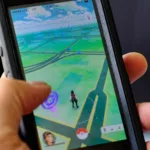Cast your minds back a decade or so and you’d probably hear anyone over the age of 40 saying something like: “the Internet has made people less social”. Far from being a call by a small number of Luddites, the notion that computers and the Internet were consuming people’s lives was one that the masses agreed with.
The reason people were ready to lambaste the Internet was that it appeared to isolate individuals who preferred to spend their time alone looking at things online. However, as the medium has evolved and technology has improved, this ideal has slowly unraveled and most people would now agree that the Internet has actually made us more social.
Instead of writing a letter, making a phone call or having to travel to a meeting point and talk to someone face-to-face, people now have instant access to hundreds and even thousands of friends. Social networks like Facebook, Twitter and Instagram have not only found a way for people to promote their daily lives, but to connect people also.
The Social Network Boom

“Facebook” (CC BY-SA 2.0) by chriscorneschi
At the last count, Statista has Facebook’s active database at 1.65 billion monthly users; users that all have the ability to connect, chat and interact with each other. In fact, according to researchers from Oxford University, the average number of friends per Facebook user is 155. Cited in an article by Sarah Knapton of The Telegraph, the findings are backed up by Professor Robin Dunbar’s claim that social media has “helped to slow down the natural rate of decay in relationship quality”.
With the Internet essentially making us more interactive and social media leading the way, the gaming industry has gradually started to embrace this revolution. When you scan the spectrum of games out there, you’ll now find a slew of social elements integrated into the top gaming options.
One industry that has its roots in social interaction is the casino gaming world. When you remove the money and odds from any casino game, the core element you’re left with is social entertainment. Sitting down with a dealer and some friends at a gaming table is hugely enjoyable and that’s the reason people have anted up in brick and mortar casinos for decades.
Online Gaming Becomes Social

“Roulette” (CC BY-SA 2.0) by ChodHound
Ever since the online casino boom took place in the early noughties, operators have been looking for ways to inject more realism and more interaction into their games. Chat boxes were the first innovation that allowed players to communicate with each other, but in recent years we’ve seen the advent of live dealer technology. Using RFID chips, webcams and specialist software, sites can now offer “live” games.
For example, the online roulette options at 32Red are now dominated by live dealer games such as Immersive Roulette. Using multiple HD cameras, 32Red’s game allows players to see the game from a variety of angles and chat with the dealer at the same time. This dynamic is great as it makes the game a lot more social and, therefore, more entertaining.
In fact, it’s a dynamic that’s been repeated across the iGaming industry. Today the likes of Casino.com offer Live Unlimited Blackjack with perfect pair bonuses, while Foxy Casino has Live Automatic Roulette where players can chat during a 24/7 stream.
Immersing People in Virtually Social Worlds

“Kagurazaka street â‘¡” (CC BY 2.0) by pouchin
Beyond the confines of the online casino industry, social elements are also being used to help people learn a new language. In 2015 a record number of Aussies travelled to Japan (the number increasing by 34%) and, with more predicted to make the trip in 2016, games such as Crystallize should start to become more popular.
Developed by researchers at Cornell University, the game is an “immersive” tool for learning Japanese. According to the lead researcher, Professor Erik Andersen, players enter a world where they must search for Japanese words and use them to communicate with fellow players.
Through a combination of social meetings with fellow language learners and specially designed tasks, players get to develop their skills in a more natural way. Instead of walking the streets of Japan and talking to random people, Crystallize allows players to explore a virtual world where everyone in it (i.e. real people as virtual players) is on a mission to learn Japanese.
The sanitized nature of Crystallize not only makes it a more comfortable environment to learn in, but it helps to make the players more social and, therefore, more able to use their new skills in a more socially natural way.
We’re About to Go Even Deeper

“Woman Using a Samsung VR Headset at SXSW” (CC BY 2.0) by nan palmero
As we move forward, the socialization of gaming is only going to increase. With companies such as Facebook and Oculus Rift developing virtual reality products such as Toybox, our online interactions are only going to increase.
Indeed, because ToyBox allows two people in remote locations to enter the same virtual room and play games such as table tennis against each other, the scope for greater interaction is clear. So, while it may have been true that the Internet made us less social 15 years ago, it’s certainly not a concept today’s online generation will be familiar with.
(Title picture “Social Media” (CC BY 2.0) by magicatwork)








